Dam Management in Severe Winter Period
16 March, 2018
Japan Water Agency (JWA) manages water resources facilities all-year-round in the 7 main river systems in Japan with management principles to "
provide safe, good-quality water stably and reasonably for the people". A record cold wave hit Japan this year and some JWA's facilities in the mountain area had much snow. However, we cannot stop water supply even under such severe condition. Fortunately We had an opportunity to visit
Yagisawa Dam and
Naramata Dam where ordinary people cannot visit during the winter months due to heavy snow. We would like to introduce about the management of dam facilities in winter, which we cannot know usually.
Yagisawa Dam and Naramata Dam
Yagisawa Dam is a
concrete arch dam of 131m in height constructed at the most upstream part of Tone River in 1967. The purpose of the dam is flood control, supply of domestic water and agricultural water, maintenance of normal function of river flow, and power generation. Hydropower generation using discharge water from the dam is being conducted by Tokyo Electric Power Company Holdings, Inc.
Naramata Dam is a
rockfill dam of 158m in height constructed on Naramata River, a tributary of Tone River in 1991. The purpose of the dam is flood control, supply of domestic water, industrial water and agricultural water, maintenance of normal function of river flow, and power generation. Hydropower generation using discharge water from the dam is being conducted by Public Enterprise Bureau of Gunma Prefecture.
These dams are one part of several dams in the upstream area of Tone River and support the lives of many people in the Tokyo metropolitan area.
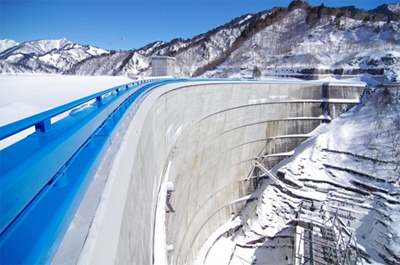
Yagisawa Dam
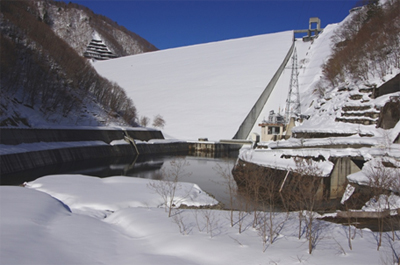
Naramata Dam
Dam Management in Winter
Yagisawa Dam and Naramata Dam are located in a heavy snowfall area in Japan and snow depth in this area sometimes exceeds 2 meters in winter. These are the facilities that have the heaviest snow among facilities managed by JWA. For this reason, the roads leading to both dams are normally closed due to avalanche risk except for JWA staff during the winter months. Under such circumstances, JWA staff from Numata Dams Integrated Operation and Maintenance Office in Numata City (about 40 kilometers away from both dams) gets to the dams with measures against avalanche such as snow removal, safety report at each fixed points from patrol vehicles while driving, and possession of beacon.
JWA staff conducts inspection of civil engineering facilities, machinery facilities and telecommunication facilities at each dam and check items that are indispensable for safety management such as water leakage from dam and displacement of dam body by using observation equipment installed inside the dam body. Recent advances in information technology made it possible to operate the facilities by remote control and monitor the facilities by camera and collect various data automatically from various sensors. However, to notice abnormality where the monitoring camera cannot check and identify failure of facilities from the sound or odor etc., continuous patrol and on-site inspection by experienced engineers are indispensable for safety management of the dams. Furthermore, as you know, Japan is globally a country prone to a lot of natural disasters such as earthquakes, so when a large-scale earthquake occurs, JWA staff has to rush to both dams and carry out an emergency inspection immediately. This crisis management system is maintained even in winter.
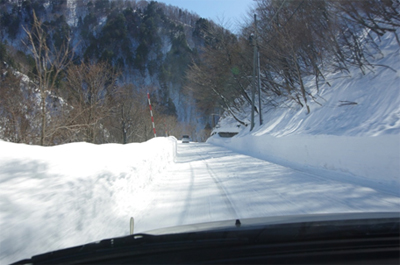
Access road to the dam
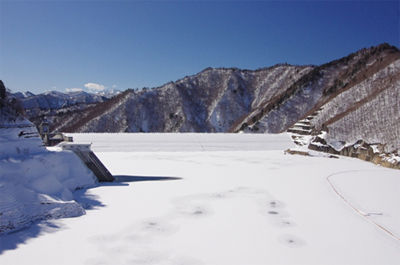
Reservoir of Naramata Dam covered
with snow and intake tower
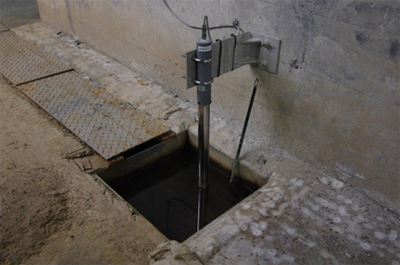
Observation equipment installed inside the dam body
The dam facilities have some devises to prepare for severe condition during winter. For example, the selective intake gate for adjusting the amount of water intake from the reservoir is located at the intake tower. However, if the water around the intake tower freezes, it may cause a trouble to the gate operation. In order to avoid such trouble, submerged mixing aeration is carried out by feeding air from compressor to generate convection current and prevent water around the gate from freezing.
Afterword
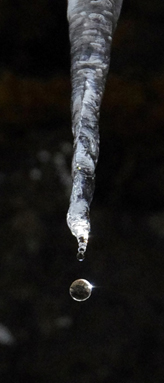
The snow piled up on the mountains around the reservoir during winter thaws and flows into the reservoir in spring. The stored water will be used for agricultural water to raise crops, urban water to support our lives, and power generation. Hence,
winter is a very important season for dams to store the water resources. Currently, the area around the dams is covered by deep snow and enveloped in silence. On the other hand,
JWA staff conducts daily inspection and operates the dam facilities in preparation for snow thaw behind the scenes.
Due to the recent news about snow damage which is frequently reported in Japan, snow is apt to embrace the image of troublesome, but on the other hand, snow is an indispensable water resource for our lives. It would be a great honor for us if you come to know about it and the fact that JWA staff is making an effort even under severe conditions in order to manage the water resources and deliver it to people every day.
Report: International Affairs Division






 The snow piled up on the mountains around the reservoir during winter thaws and flows into the reservoir in spring. The stored water will be used for agricultural water to raise crops, urban water to support our lives, and power generation. Hence, winter is a very important season for dams to store the water resources. Currently, the area around the dams is covered by deep snow and enveloped in silence. On the other hand, JWA staff conducts daily inspection and operates the dam facilities in preparation for snow thaw behind the scenes.
The snow piled up on the mountains around the reservoir during winter thaws and flows into the reservoir in spring. The stored water will be used for agricultural water to raise crops, urban water to support our lives, and power generation. Hence, winter is a very important season for dams to store the water resources. Currently, the area around the dams is covered by deep snow and enveloped in silence. On the other hand, JWA staff conducts daily inspection and operates the dam facilities in preparation for snow thaw behind the scenes.